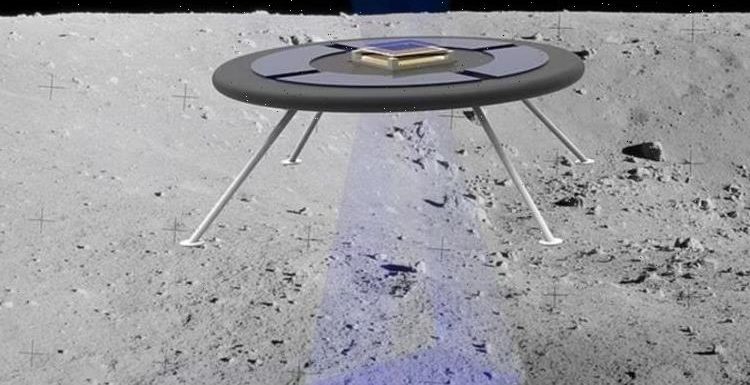
Space debris has been found in earth's orbit says expert
We use your sign-up to provide content in ways you’ve consented to and to improve our understanding of you. This may include adverts from us and 3rd parties based on our understanding. You can unsubscribe at any time. More info
The rover resembles a flying saucer and uses miniature ion thrusters, called ionic-liquid ion sources to levitate. The vehicle takes advantage of the natural electric fields that are built up over the Moon’s surface due to the direct exposure to solar radiation and to a lack of atmosphere.
This surface charge is said to be strong enough to kick up Moondust and levitate it more than three feet above the ground just like static electricity makes the hair stand on end.
At the moment the device is still a concept and has only been tested out in simulations, not in a real-world scenario.
However, the team of researchers at MIT are confident that it will operate as predicted.
The researchers hope that this kind of device could one day help future missions to the Moon and asteroids and will safely hover and manoeuvre over unknown, uneven terrain.


The rover works by sending electricity in the form of ions into the surface of the moon, which would then get repelled by the lunar surface, pushing it off the ground.
In their first feasibility study, the researchers found that the ion repulsion boost could be strong enough to get a 2lb vehicle on the moon, or on a large asteroid such as Psyche.
Lead author Oliver Jia-Richards, a graduate student in MIT’s Department of Aeronautics and Astronautics said: “We think of using this like the Hayabusa missions that were launched by the Japanese space agency.
“That spacecraft operated around a small asteroid and deployed small rovers to its surface.

“Similarly, we think a future mission could send out small hovering rovers to explore the surface of the moon and other asteroids.”
The ions are shot into the ground through small micro-fabricated nozzles connected to a reservoir containing ionic liquid.
An ionic liquid is basically a salt that is found in liquid state at temperatures below 100C.
When a current passes through this liquid, the ions are charged and emit a beam through the nozzles.
DON’T MISS:
Brexit Britain ‘ready’ to deny EU £15bn with ‘better’ plan [INSIGHT]
NASA signs up British priest to prepare for alien life reveal [REVEAL]
Scientists pinpoint exactly when the Sun will explode [ANALYSIS]


Mathematically, the researchers found that this model would be feasible, and would require a small, 2lb rover on the Moon, able to get about three inches off the ground.
According to a leading researcher Paulo Lozano: “This kind of ionic design uses very little power to generate a lot of voltage.
He also added that “the power needed is so small, you could do this almost for free”.
“With a levitating rover, you don’t have to worry about wheels or moving parts.
“An asteroid’s terrain could be totally uneven, and as long as you had a controlled mechanism to keep your rover floating, then you could go over very rough, unexplored terrain, without having to dodge the asteroid physically.”
Source: Read Full Article